Products

RNA Splice Detection Sensor Development
Documentation
Main Info
- ASSAY PRESENTATION Lyophilized RNA sensors, buffer reagents, and dyes
- FORMAT Available in 96- or 384-well plate formats.
- STORAGE CONDITIONS Stable for 2 year at -20 ºC.
Features
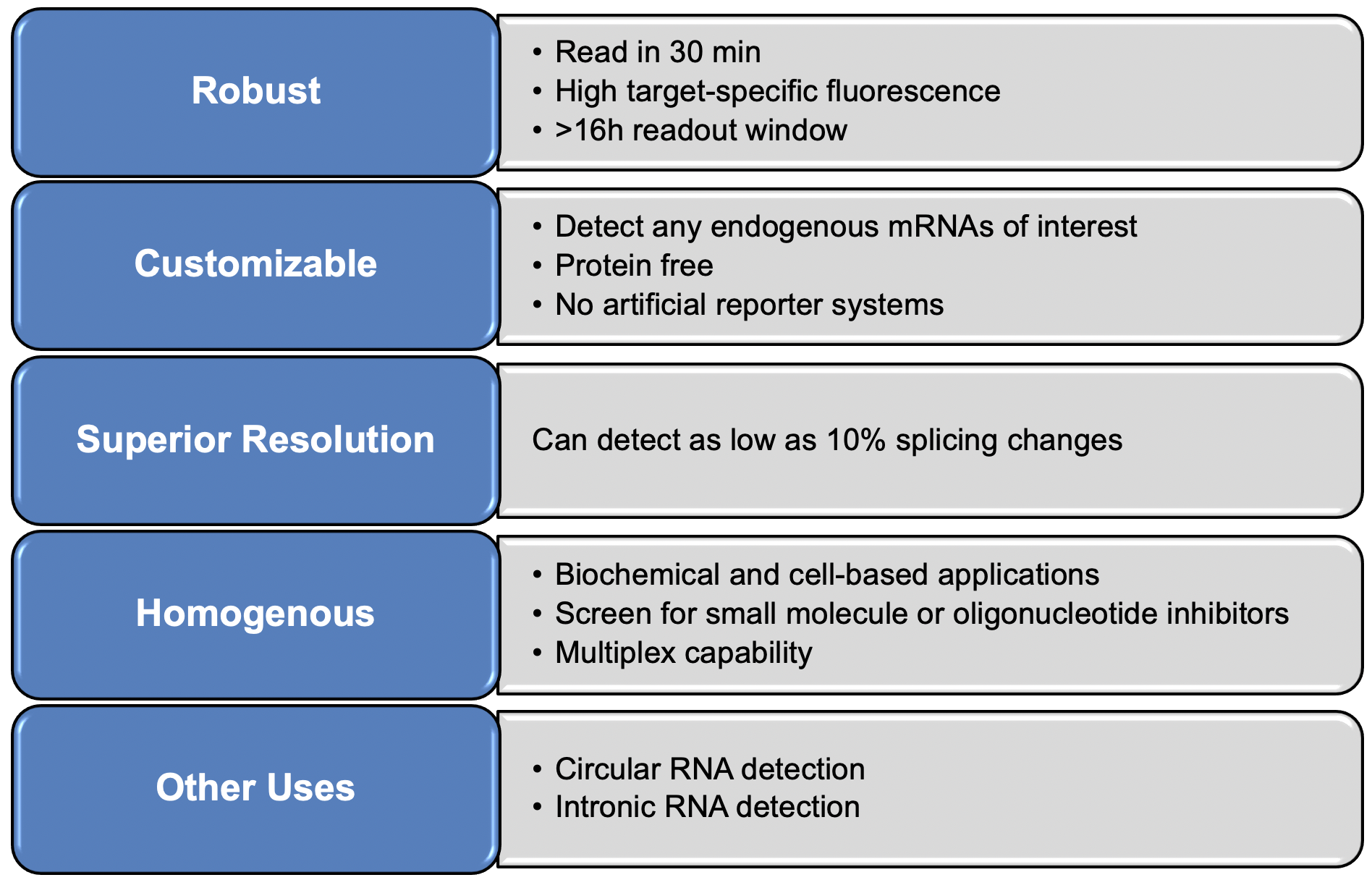
Assay Concept
Splice sensor is comprised of a readout module that is composed of a SpinachTM and a recognition module that targets the spliced RNA of interest. The recognition module is comprised of two RNA probes (dark red and pink) that are complementary to the exon sequences flanking the target splice site, i.e. exon 1 (dark red) and exon 3 (pink). Only in the presence of targets splice site can the recognition module stabilize SpinachTM folding and induce fluorescence.
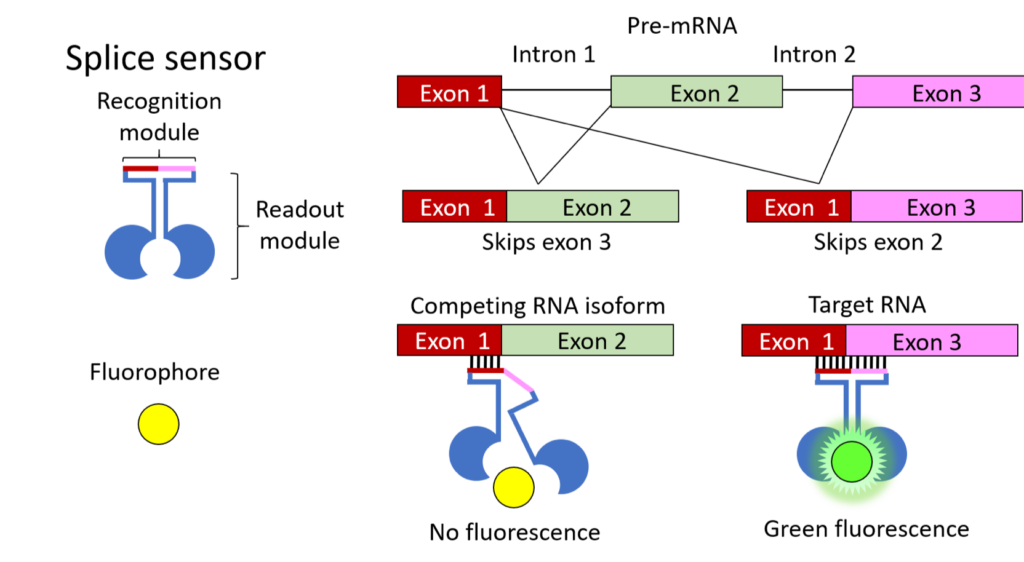
Ease of Use
The splice sensor assay is easy-to-use and homogenous. Simply incubate your samples with the provided assay reagents for 30 min and read the samples on a fluorescence plate reader. It is easy adaptable for high-throughput screening workflow.

Comparisons to Other Splice Detection Methods
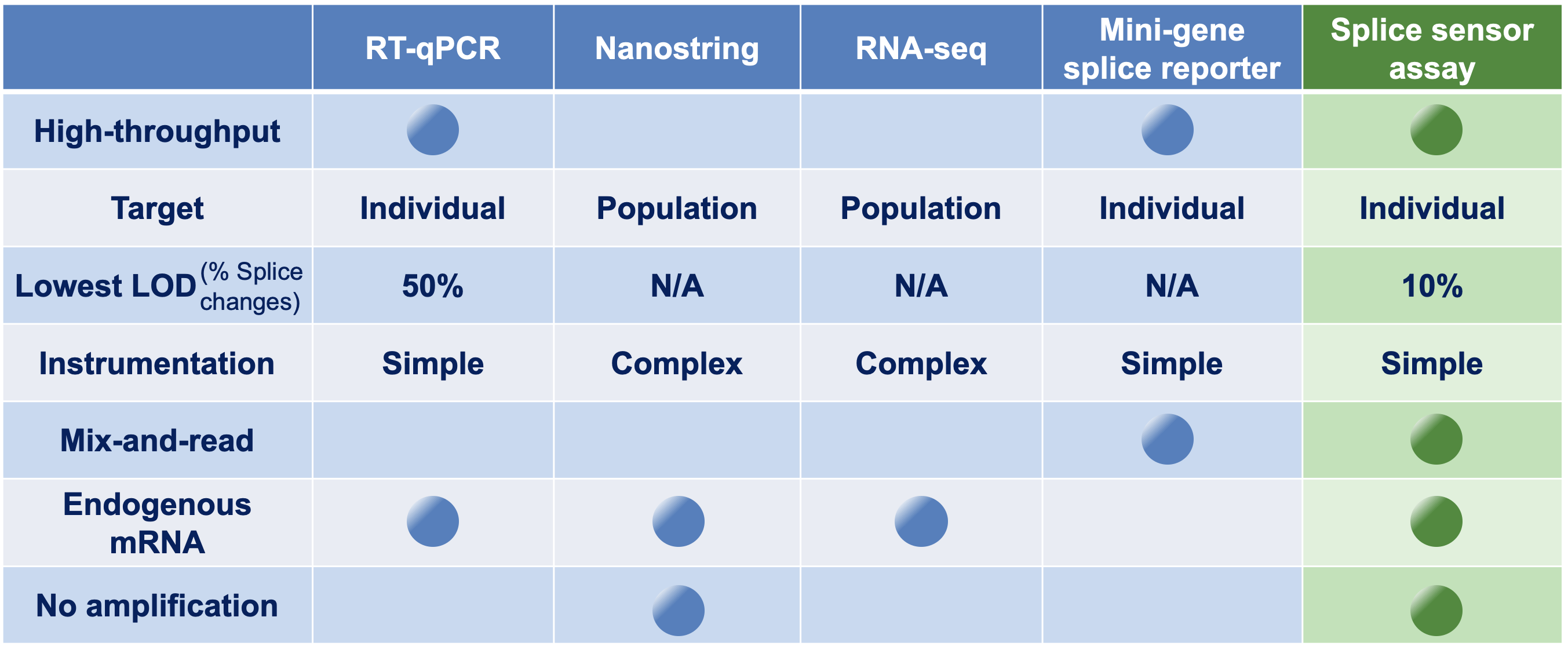
CASE STUDY: Pyruvate Kinase
Pyruvate kinase isoform switching is one of the ways cancer cells reprogram glucose metabolism to meet their energy demands. In normal adult cells, only pyruvate kinase M1 (PKM1) is expressed. But in cancer cells, pyruvate kinase M2 (PKM2) is expressed. Splice modulation back to PKM1 has been shown to slow cancer progression or increase the efficacy of existing anticancer drugs.
Fast and selective response with broad dynamic range
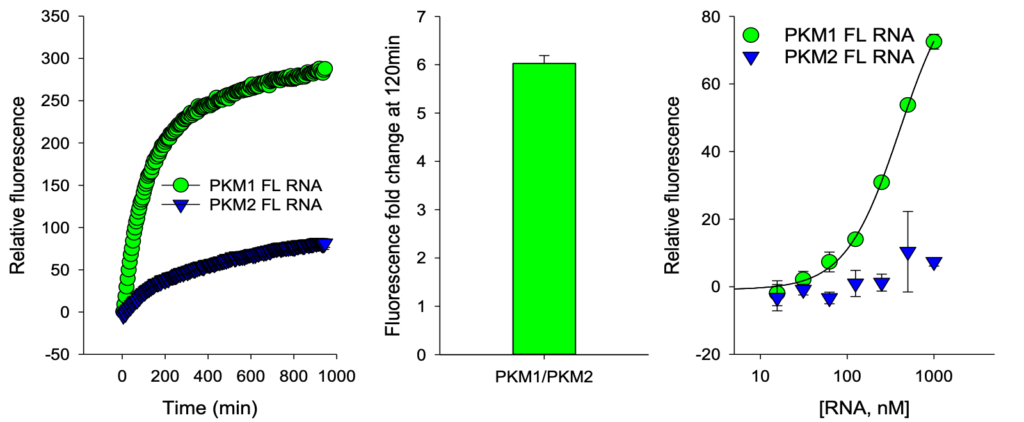
Signals in cells match qPCR results
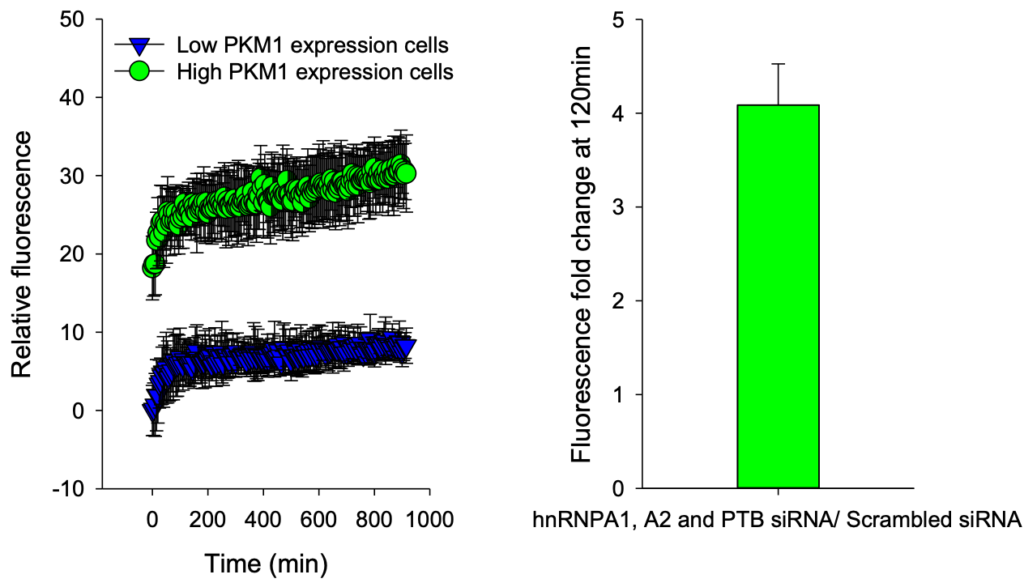
Detect significantly smaller splicing changes
